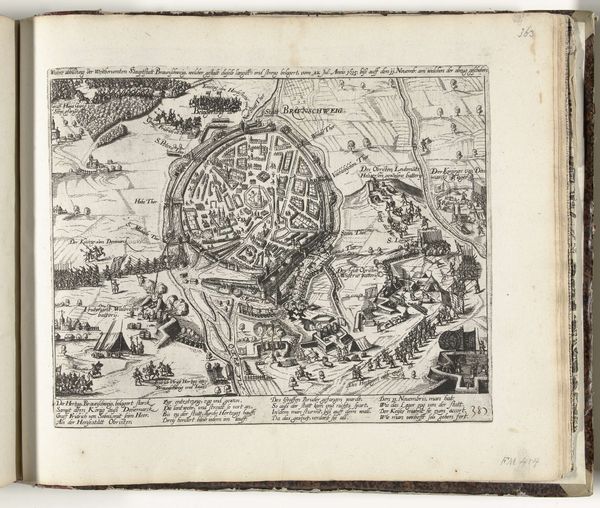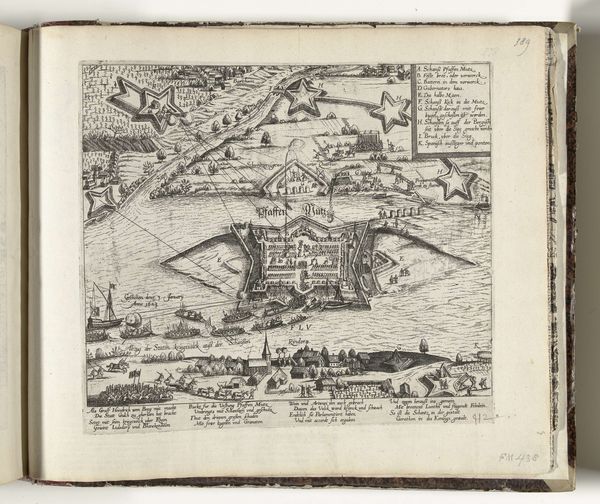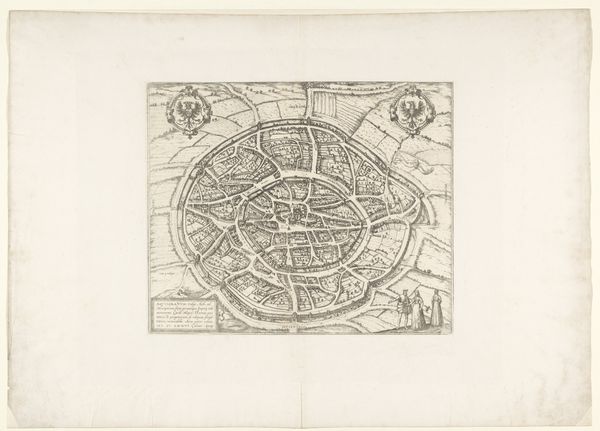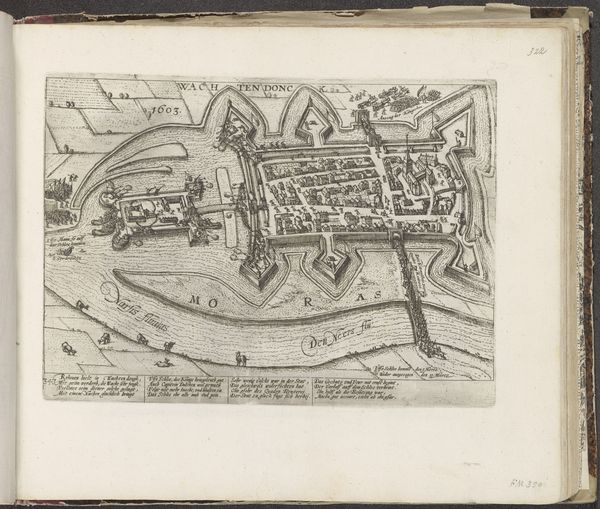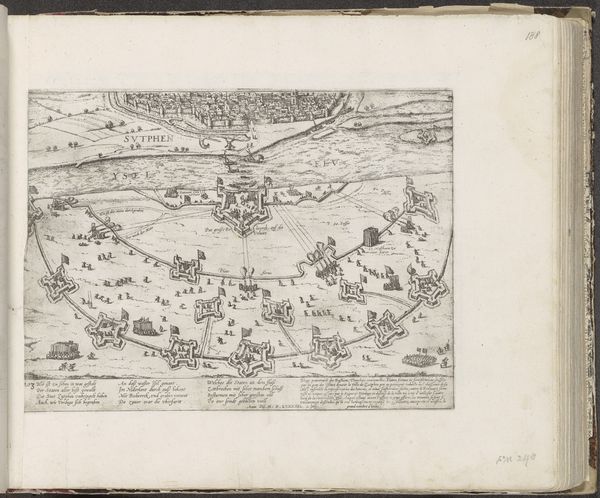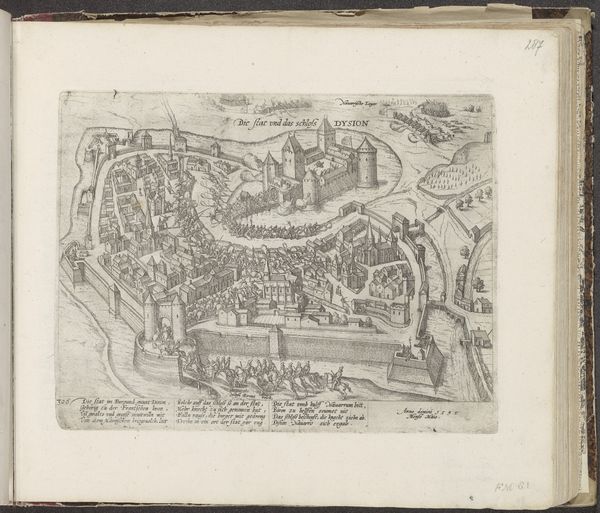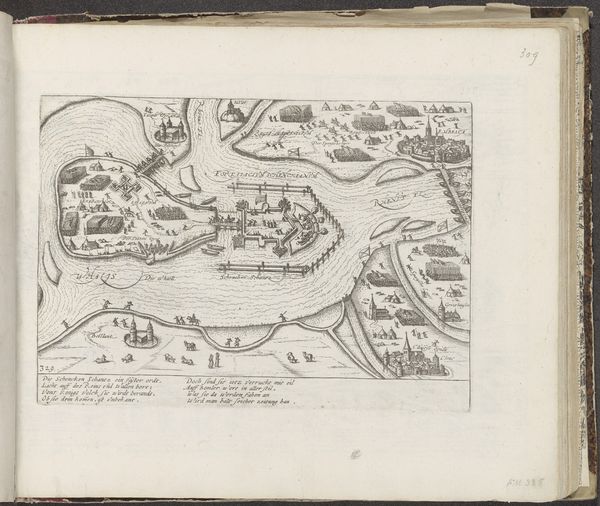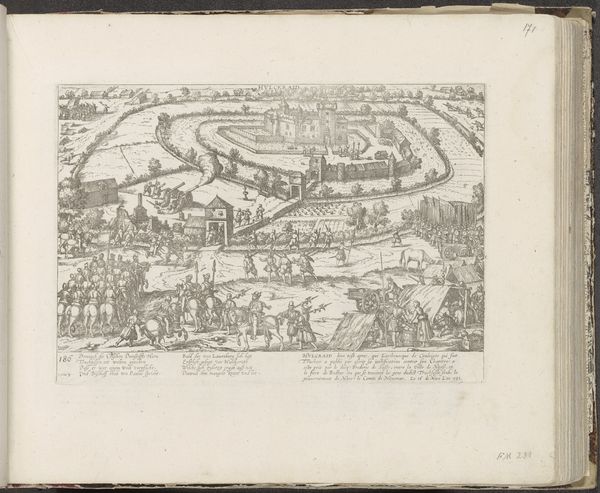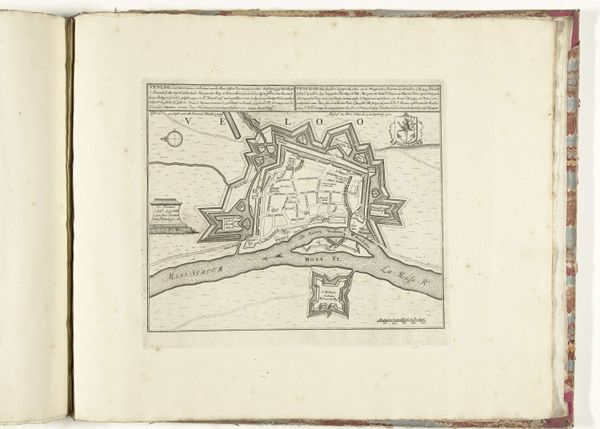
#
pen drawing
#
pen sketch
#
sketch book
#
hand drawn type
#
personal sketchbook
#
pen-ink sketch
#
ink colored
#
pen work
#
sketchbook drawing
#
sketchbook art
Dimensions: height 231 mm, width 302 mm
Copyright: Rijks Museum: Open Domain
Editor: Here we have Frans Hogenberg's "Inname van Oldenzaal door Spinola, 1605", created between 1605 and 1607. It's currently held at the Rijksmuseum. It's incredibly detailed for what looks like a pen drawing! What strikes me is the almost clinical precision in depicting the siege. What do you see in this piece, considering the historical context? Curator: What I find compelling is how this image, seemingly a simple illustration, functioned as propaganda. Hogenberg’s detailed rendering elevates the military action to a symbol of Spanish power and order, which needed visual reinforcement. The circular layout of the city within the drawing almost gives it the sense of order and the feeling that the territory and people can be contained and controlled. What kind of public message do you think the patrons who supported the printing of such drawings wished to share? Editor: I guess it served to promote a sense of inevitability and dominance? Like, resistance is futile, see how organized we are? It's interesting how a drawing can be so much more than just a depiction of an event. It seems there is power embedded in the images we consume. Curator: Precisely! These prints circulated widely and shaped public opinion. Also, consider the perspective; it's not necessarily accurate. It's elevated and idealized, meant to convey control. Can we then say it might misrepresent the events that transpired? Editor: Absolutely! It’s presenting a specific narrative, carefully constructed. That makes me consider the role of media, even images, in shaping our understanding of conflict today. Curator: Exactly! Reflecting on it, Hogenberg’s work reveals how deeply intertwined art, politics, and public perception were—and continue to be. Editor: I see. I hadn't thought about how intentional that skewed perspective might have been, so that puts this image in a whole new light.
Comments
No comments
Be the first to comment and join the conversation on the ultimate creative platform.
